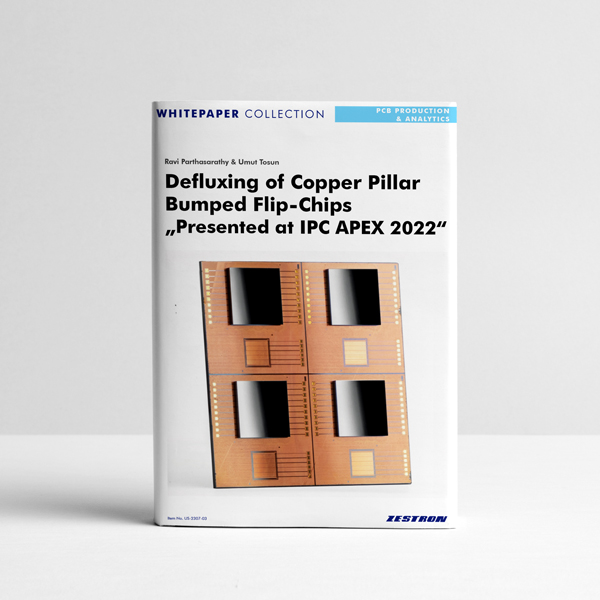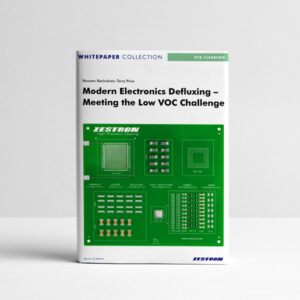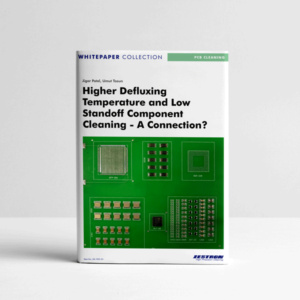Description
[07/2023]
Flip-chip technology is gaining popularity in the electronics industry due to its cost-effectiveness, increased package density, improved performance, and higher I/O density. However, traditional solder bump technology faces challenges below 125μm pitch, such as reduced standoff height, decreased joint reliability, and increased risk of shorts. To overcome these issues, copper pillar technology is emerging as a replacement for solder bumps. Copper pillar technology offers benefits like improved electrical performance, smaller device sizes, better control of standoff height, and reduced cost through fewer package substrate layers. The use of copper pillars allows for tighter pitches and lower standoffs, but it also raises concerns about flux residue removal to ensure product functionality and reliability. Flux residues can negatively impact underfill adhesion and hinder the flow of underfill material, potentially leading to delamination or void formation.
A study was conducted to investigate the cleaning of flux residues on copper pillar bumped flip-chips using DI-water and a low-concentration alkaline cleaning agent. The study’s findings can serve as a benchmark for future research involving smaller bump pitches and denser package designs, including 2.5D and 3D configurations


 Naveen Ravindran, M.S.Ch.E.
Application Engineer, ZESTRON Americas
Naveen Ravindran, M.S.Ch.E.
Application Engineer, ZESTRON Americas


